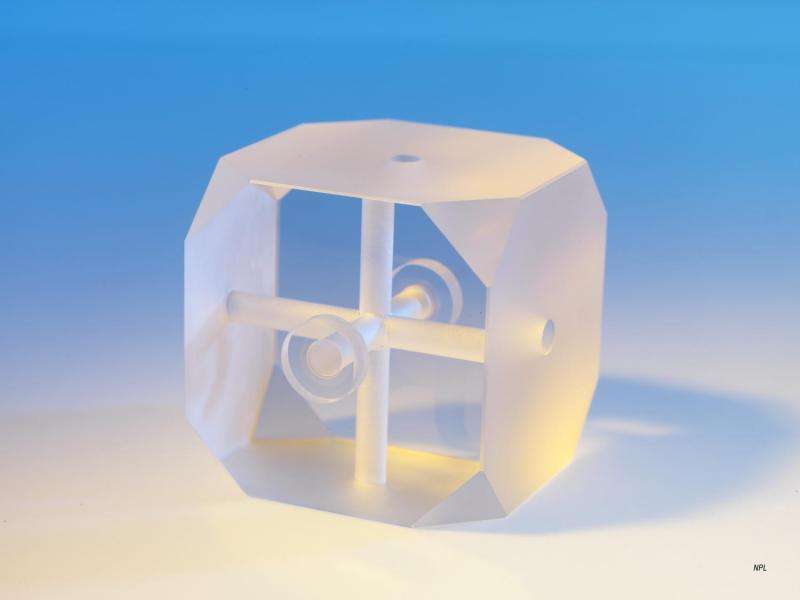Image: Optical stabilising reference cavity

What looks like an abstract sculpture is actually the laser equivalent of a tuning fork – to serve a new generation of space instruments.
"This is an 'optical stabilising reference cavity', through which laser light is contained between a pair of super-polished mirrors kept a precise distance apart," explains ESA physicist Eamonn Murphy.
"This laser light is then used to lock the frequency of the laser – and prevent it drifting – in a similar principle to a tuning fork, as applied to musical instruments."
Such lasers will serve at the heart of next-generation 'optical atomic clocks', improving on current microwave atomic clocks used for timing and navigation, as well as enabling ultrasensitive gravity detectors.
This 5 cm cube cavity was developed for ESA by the National Physical Laboratory, NPL, which is the national measurement institute of the UK, specialised in extremely precise measuring techniques.
NPL used ultra-low expansion glass, resistant to changing size with temperature. A pathway was then drilled through the middle, with mirrors placed at either end.
The working version of the cavity is enclosed in a vacuum chamber to prevent any disturbance by air molecules, followed by a thermal shroud to maintain its temperature to within a tiny fraction of a degree. It can then be placed on an acoustic damping baseplate to further isolate it from any microvibrations.
This effort began back in 2009 with three parallel projects within ESA's Basic Technology Research Programme, working with the national measuring institutes France and Germany as well as the UK.
Expertise and elements from all the resulting designs will soon be incorporated into a new working prototype, supported through ESA's General Support Technology Programme, which finalises hardware for space.
"Our aim is to deliver a six order-of-magnitude improvement in laser linewidth from initial laser performance," adds Eamonn, "to maintain a stable drift-free frequency, insensitive to even minute accelerations."
Provided by European Space Agency





















